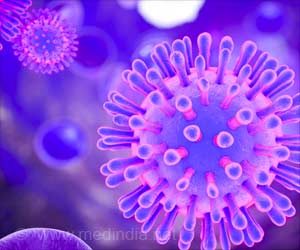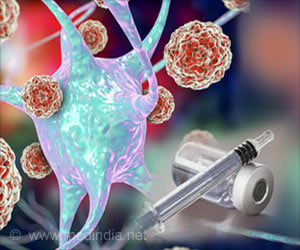- An injectable therapeutic gel can hold chemo-immunotherapeutic drugs and deliver them to the tumor site.
- Upon reaching the tumor site, the gel is degraded and first the chemotherapeutic agent is released followed by the immunotherapeutic agent.
- The cytotoxic chemotherapeutic first kills some cancer cells and enhances the sensitivity of the tumor towards immunotherapy.
Cancer Immunotherapy
Mutations are spontaneous events that happen in every living cell. However, some mutations can lead to cancer. But our immune system is smart enough to recognize these mutations and destroy these cells. Unfortunately, sometimes cancer cells are lucky enough and manage to trick our immune system and evade immune attack by hijacking the immune system.How the gel therapy works
The scaffold is essentially a hydrogel, a material that is commonly used in contact lenses and diapers to control humidity. However, this study has given it a medical potential. The polymeric network can be loaded with therapeutics and injected into the tumor site."The trick is that the gel can be formed quickly inside the body once a biocompatible polymer and its crosslinker are mixed together," said co-lead author, Jinqiang Wang, "We made sure that one of these agents can be cleaved apart by reactive oxygen species, or ROS - a natural chemical byproduct of cell metabolism."
The hydrogel scaffold was loaded with a chemotherapeutic gemcitabine and an immunotherapeutic agent - anti-PD-L1 blocking antibody. When the gel reaches the tumor, the reactive oxygen species in the tumor degrade the gel releasing gemcitabine first, and then anti-PD-L1.
"The cytotoxic chemotherapy can first kill some cancer cells and enhance the sensitivity of the tumor toward ICB therapy, which then stimulates the effectiveness of the ICB therapy," said co-author Gianpietro Dotti, PhD, professor of microbiology and immunology at the UNC School of Medicine. "With the degradation of the gel, the ROS level in the tumor site can be reduced, which also helps inhibit tumor growth."
This is what lead author Zhen Gu, PhD, associate professor in the joint UNC/NCSU Biomedical Engineering Department had to say about the potential therapy: "We've created a simple method to use chemotherapy while leveraging the biology of the tumor and our natural defense against foreign invaders to beat back tumor development with limited side effects."
References:
- Chao Wang, Jinqiang Wang et al. “In situ formed reactive oxygen species–responsive scaffold with gemcitabine and checkpoint inhibitor for combination therapy.” Science Translational Medicine, (2018) DOI: 10.1126/scitranslmed.aan3682
- Nano-hydrogels that attack cancer cells - (https://phys.org/news/2015-02-nano-hydrogels-cancer-cells.html#jCp)










